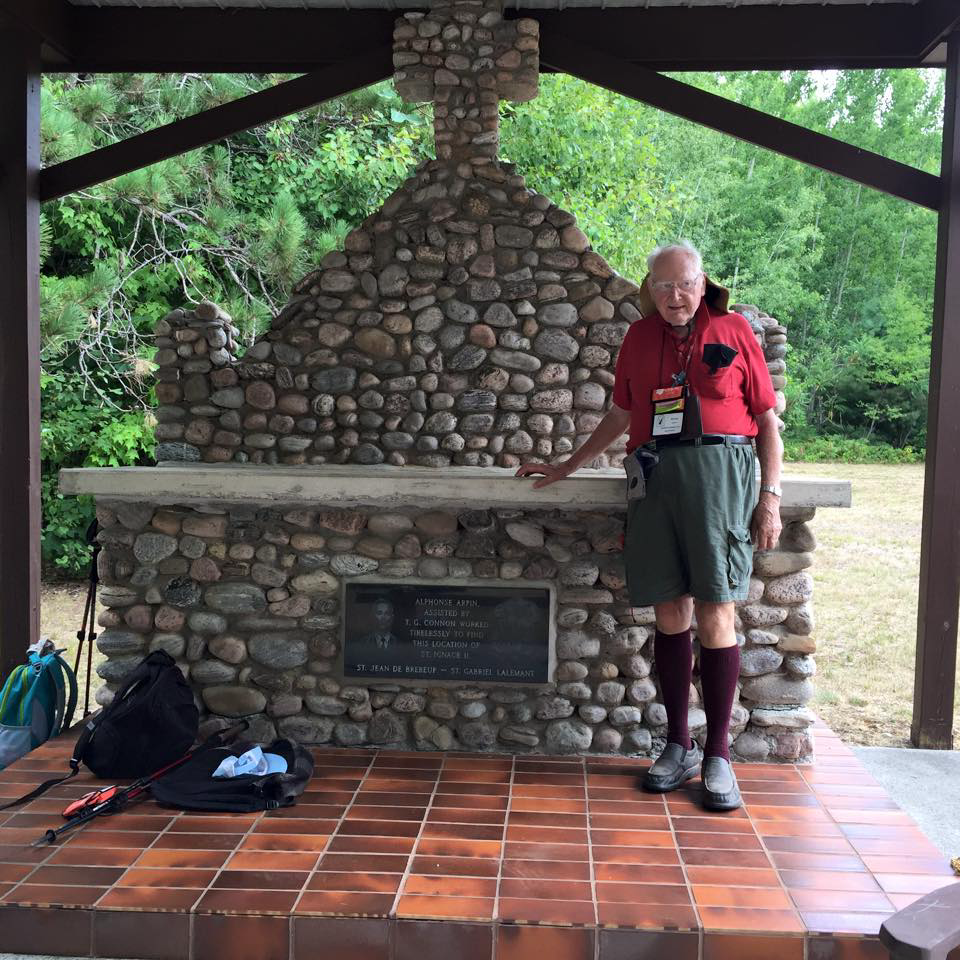There is much one can write about the Guelph Walking Pilgrimage—the Christian fellowship as it should be, as Christ directed us and not what it is; the awesome mystery of visiting the holy ground at St. Ignace II, the site of Sts. Jean Brebeuf and Gabriel Lalimant’s martyrdom in March 1649; the joy of finally arriving at the martyrs’ shrine, after a grueling week due to the blistering sun; that we didn’t mind entering the Holy Door and doing the stations of the cross in the pouring, but refreshing rain—O Petrichor, how delightful—before entering the shrine for our final mass; the logistics so well executed, and especially the meals along the way so lovingly prepared by volunteers and friends.
But I decided in one of our silent periods to write about the three “guards” on the pilgrimage, the rabbit up front, the monkey in the middle and the turtle bringing up the rear.
The RABBIT looks out for approaching traffic and other dangers. He or she notifies us by the whistle, one blast to caution us to get onto the left side of the road and two to walk in single file on the verge. He or she is the prophet or shepherd who proclaims the Word of God, warning us of God’s will when we want to stray off the path. They show us the way and lead us by example. There are instances in the Bible of prophets and shepherds themselves straying off the path, such as Sampson and David. But the Lord mercifully brings them back. So often we stray from the flock and the shepherd brings us back by hook or by crook, a painful procedure. Sadly, not all shepherds do their job, and Ezekiel 34 has much to say about that. However, the Lord says in verse 11, “I will look for my sheep and take care of them myself.” Thankfully, we have a merciful Good Shepherd.
The MONKEY in the middle is us. Need I say more?
The TURTLE is the one who protects the flock from the rear. They lovingly care for the weary and disabled, who can’t keep up with the rest or can walk no longer. When necessary they call for help from support vehicles. They are the Sister Christines (Sister Christine Leyser founded the Welcome In Drop-In Centre in downtown Guelph.) or Mother Theresas of the church, who bind up peoples’ wounds and heal the broken hearted.
These (rabbit, monkey, turtle) are three necessary, essential elements of the church. We would all be much poorer without them.
Petrichor is a new word in my vocabulary—learned from my “adopted” grandson Ezechyel —meaning the fresh smell of rain after a hot, dry spell. Its origin is from the Greek petros (stone) + ichor (fluid); coined by Australian geochemists Richard Grenfell Thomas and Isabel Joy Bear in 1964. I feel certain that if he had known of the word St. Francis would have personified it in his Canticle of the Creatures.
Why do we go on a pilgrimage?
In responses to the question Michael replied …
1. I think the world is so antagonistic to the Gospel that Christians should withdraw themselves and do crazy things as the desert fathers did in order, in a non-judgmental way, to reprove the world. Going on a pilgrimage is one such way. I believe Christians should live in community, as much apart from the world as possible. The community fellowship on the pilgrimage was more like that of the early church, unlike the church today, in which we’re all divided, certainly in the west. Richard Rohr would ascribe that to our dualistic thinking. On the pilgrimage we were thinking, behaving and caring for one another, non-dualistically.
2. It’s a great way to make new friends.
3. It’s a relatively cheap way to take a holiday. One can enjoy the beautiful scenery on the way, the sights and sounds of the birds and insects, the stars at night, away from the glare of the big cities; all God’s creation.
What more could one want?
This is Michael’s second time participating in the eight day Guelph Walking Pilgrimage. He is a member of St. George’s Guelph.

Starting Fresh: Spiritual Resolutions for a Faith-Filled 2026